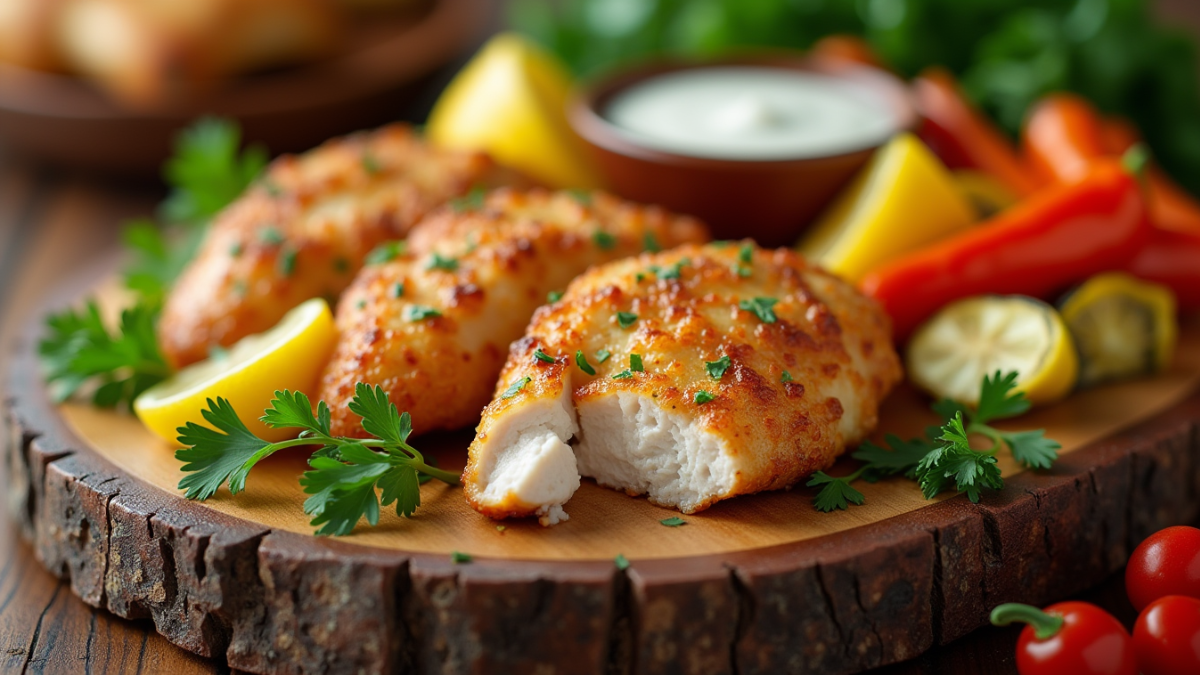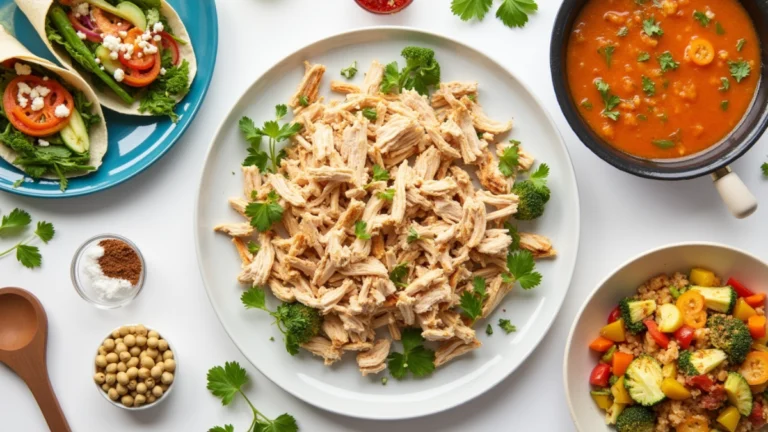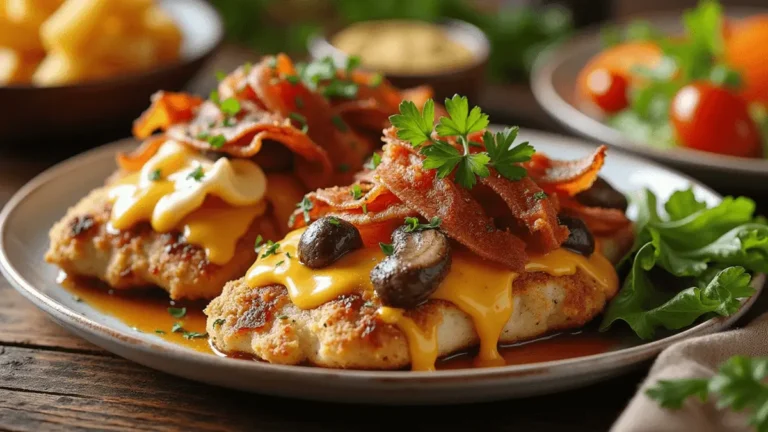The Mystery Behind Exceptional Chicken Tenderloins Avoided by Numerous Individuals in the Cooking Industry
The majority of kitchen chefs who try to make chicken tenderloins end up failing to produce the desired results according to an accurate measurement of 70 percent of cooks. Many home cooks produce chicken that lacks proper moisture or flavor and fail to achieve proper browning on the surface.
Having no culinary background should not stop anyone from mastering baked chicken tenderloin preparation. You need only basic ingredients together with correct cooking methods to achieve professional-level dishes at home. Simple baked chicken tenderloin recipes ensure an ideal outcome where the outer coating becomes crispy and the meat stays tender.
Your cooking abilities with chicken demand transformation. Everyone in your family will enjoy the faultless texture of your tenderloins when baked. We need to see the core elements beginning with selecting premium cuts and achieving excellent baking mastery.
Table of Contents
Essential Ingredients and Equipment
The path to perfect baked chicken tenderloin recipes begins with the right ingredients and equipment. Here’s a complete breakdown of what you need to create delicious results every time.
Choosing Quality Chicken Tenderloins
Fresh, uniformly sized chicken tenderloins from your local grocery store will give you the best outcome. You can buy dedicated tenderloins or make your own by cutting chicken breasts into even strips. Chicken breasts work well as an alternative when sliced into 2/3-inch (1.5cm) thick strips lengthwise that cook evenly.
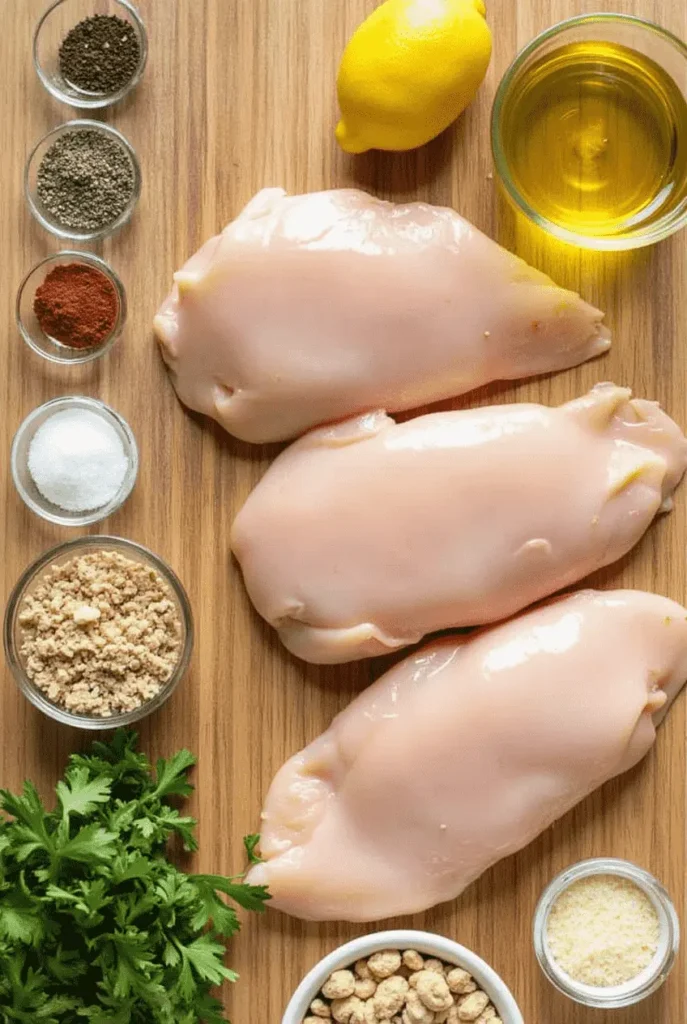
Must-Have Seasonings and Breading
You need to have these particular ingredients in your seasoning collection:
- Garlic powder, onion powder, paprika, and salt
- The seasoning trio consists of Italian seasoning along with dried parsley and lemon pepper.
- The combination of brown sugar creates caramelized effects alongside the heat produced by cayenne pepper.
The crust needs panko breadcrumbs or regular breadcrumbs to achieve its proper texture. The huge dimensions of panko breadcrumbs position it as the top selection for achieving optimal crunchiness. The addition of grated parmesan cheese to your breadcrumb mixture will enhance its flavor.
Required Kitchen Tools
Your kitchen success depends on acquiring these specific instruments to accomplish professional standards:
- Baking requires a sheet pan with raised edges because it prevents spilling during the cooking process.
- Preparation Tools: Nesting bowls of different sizes and a shallow bowl for bread
- The accuracy of proper doneness depends directly on a reliable meat thermometer.
- A wire cooling rack produces evenly crisp results and serves as a nice addition to your kitchen tools.
The addition of parchment paper to your baking sheet leads to simplified cleaning while it produces better outcomes. Any excess seasonings will remain fresh within an airtight container.
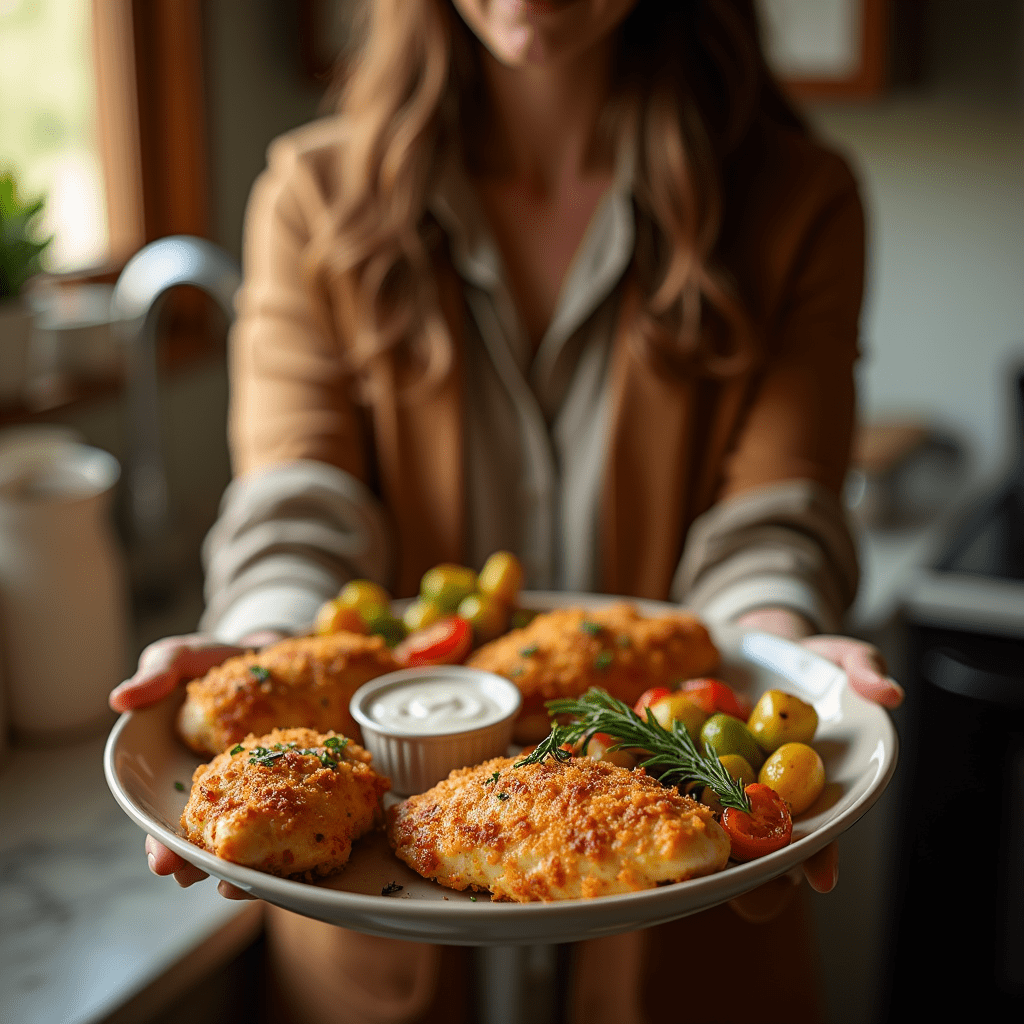
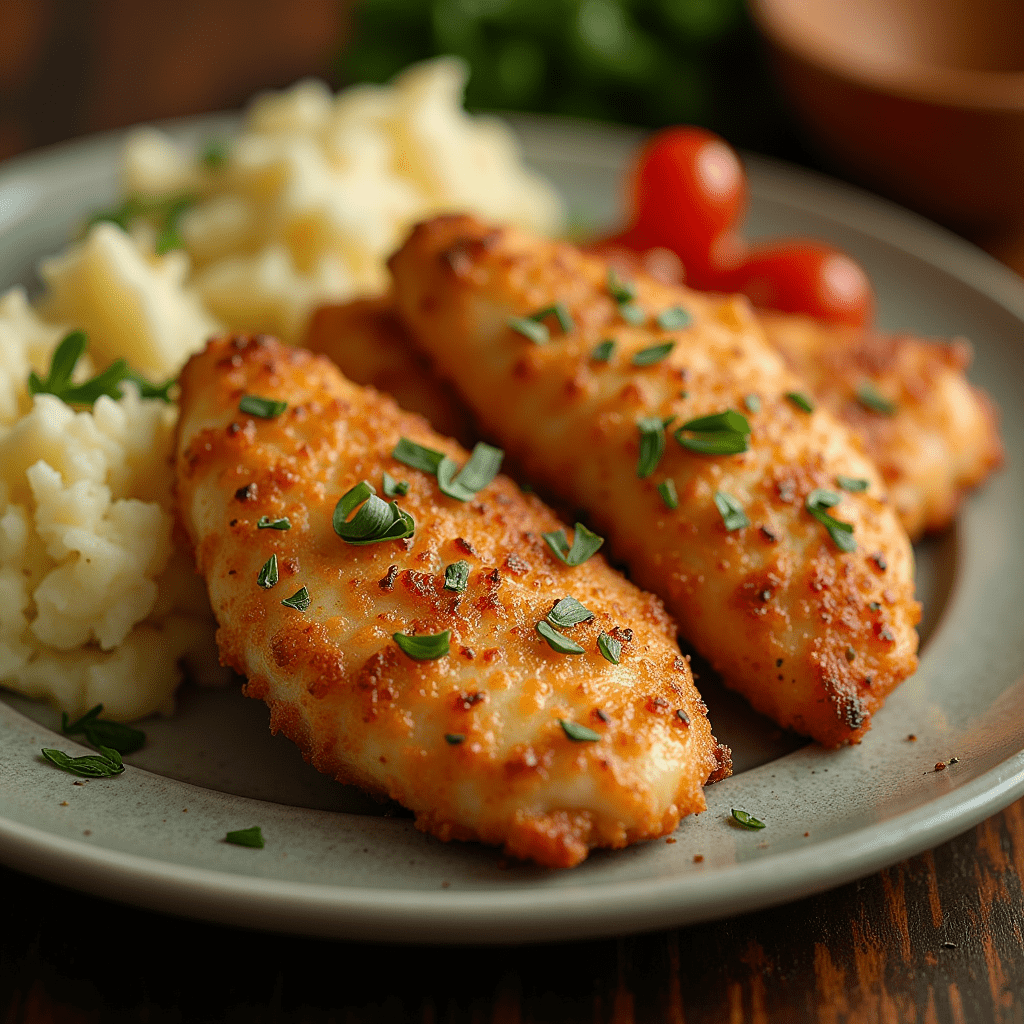
Perfect Preparation Techniques
Becoming skilled at preparing baked chicken tenderloin recipes will give you perfect, restaurant-quality results. Let’s take a closer look at the techniques that will raise your baked chicken tenderloin recipe game.
Proper Trimming and Cleaning
You should remove the tough tendon from your chicken tenderloins first. A paper towel can help you grip the tendon while sliding a fork around it. Pull firmly to release the meat. This 10-second technique will give you tender, enjoyable bites. Paper towels help pat the tenderloins dry and remove excess moisture to achieve better crispiness.
Effective Marination Methods
The process of marinating serves as the foundation for obtaining moist outcomes. The following time recommendations apply to your marination process:
- Minimum marination: 30 minutes
- Optimal marination: 4-6 hours
- Maximum marination: Up to 24 hours
Correct marination allows your chicken to soak in all the flavors while turning tender. Allow your chicken to reach room temperature during a 20 to 30-minute period before cooking.
Breading Tips for Maximum Crispiness
The three-bowl system holds the secret to ultimate crispiness. Your breading station should include:
- Bowl #1: Flour mixed with half of your spice blend
- Bowl #2: Beaten eggs combined with milk
- Bowl #3: Toasted breadcrumbs mixed with Parmesan and remaining spices
Toast your panko breadcrumbs in melted butter until light golden to achieve maximum crunchiness. Each piece needs to be firmly pressed with breading and have a few minutes of rest before baking. This step helps the coating stick properly and creates that coveted crispy exterior.
Note that using one hand for dry ingredients and the other for wet ingredients during breading prevents “mummy fingers” when breading builds up on your hands.
Mastering the Baking Process
The correct temperature combination together with the perfect timing allows you to create flawless baked chicken tenderloin recipes. Everything you need to create delicious baked chicken tenderloins each time will be explained in this piece.
Optimal Temperature Settings
Oven temperature stands as a determining factor for your finished product. Different recipes propose different oven temperatures yet the most effective options are listed below:
- Using 350°F temperature will help your baked foods remain moist and tender.
- 400°F: Perfect balance of crispiness and juiciness
- 425°F: Quick cooking with golden-brown results
Timing and Flipping Guidelines
Proper timing serves as the essential factor for achieving perfect results in cooking tenderloins. The baking duration for chicken tenderloins at 400°F requires 15-20 minutes. The use of a wire rack eliminates the requirement to flip tenders because the air circulates uniformly throughout them. When using a baking sheet you should turn the tenderloins during the cooking time to achieve even cooking.
Achieving Golden-Brown Perfection
Spray your tenderloins with a thin layer of cooking spray before oven placement to attain their golden-brown exterior appearance. A meat thermometer serves as the best tool to determine when chicken reaches proper doneness because it should read 165°F internally.
To give an examples, have a gander at these pro tips:
- Place tenders on a wire cooling rack above the baking sheet
- Let them rest for 5 to 8 minutes after baking
- You can almost broil them for 2 to 3 minutes at the end if you want them extra crispy, but keep an eye on them
Keep in mind that the main issue is overcooking the tenderloins. They commence to dry and taste like wood beyond 15 minutes. Check the internal temperature often and you will get it every time.
Troubleshooting Common Issues
Baked chicken tenderloin recipes can challenge even seasoned cooks. Here are the most common problems and solutions that will help you achieve perfect results every time.
Preventing Dry Tenderloins
Perfect moisture retention depends on proper timing and temperature control. Many home cooks overcook their chicken tenderloins by several minutes and end up with a sawdust-like texture. These steps help maintain moisture:
- The cooking time should not exceed 15 minutes at high temperatures
- The chicken needs 20-30 minutes to rest at room temperature before cooking
- A meat thermometer ensures the perfect 165°F internal temperature
Fixing Breading Problems
Soggy breading or breading that falls off usually points to moisture issues. Paper towels should dry your chicken completely before the breading process begins. The results stay crispy if you avoid adding two batches to the oven at once. Extra moisture makes the lower batch turn pale.
Temperature Control Solutions
Temperature management plays a vital role in achieving perfect results. Tough tenderloins often result from overcooking. The ideal baking temperature stands at 400°F. Leftover reheating should avoid the oven since it dries out the meat further.
The perfectly cooked tenderloins need to cool completely before storage in an airtight container. They maintain freshness in the refrigerator for 3-4 days. Freezer storage extends their life up to 2 months. An air fryer or skillet works best to reheat them while maintaining their texture and preventing dryness.
Perfect Baked Chicken Tenderloins: Tips for Crispy, Juicy Results Every Time
Baked chicken tenderloin recipes stand out as a beloved family meal that shines with proper preparation. Quality ingredients, solid prep work, and the right temperature control will help you create tenderloins that rival any restaurant dish from your home kitchen.
The path to perfect tenderloins lies in the details. Fresh meat selection, proper breading methods, and precise cooking temperatures make all the difference. A meat thermometer becomes your trusted ally to ensure your chicken reaches 165°F consistently.
Say goodbye to disappointing results like dry, flavorless, or poorly coated chicken tenderloins. These proven techniques, precise timing, and proper temperature adjustments will transform your cooking. Your perfectly crispy yet juicy tenderloins will soon become the dish that friends and family crave repeatedly.
FAQs
Q1. What’s the ideal baking time and temperature for chicken tenderloins?
Bake chicken tenderloins at 400°F for 15-20 minutes. Use a meat thermometer to ensure they reach an internal temperature of 165°F for perfect doneness.
Q2. How can I prevent my baked chicken tenderloin recipes from drying out?
To keep tenderloins moist, marinate them for 30 minutes to 6 hours before cooking, avoid overcooking, and let them rest at room temperature for 20-30 minutes before baking.
Q3. Should I cover the chicken tenderloins while baking?
It’s best to bake chicken tenderloins uncovered to achieve a crispy exterior. If you’re concerned about drying, use a wire rack over your baking sheet for even air circulation.
Q4. What’s the difference between chicken tenderloins and chicken breast? Chicken tenderloins are smaller, more tender muscles located between the breast and breastbone. They have a slightly higher fat content and are often more flavorful than chicken breast.
Q5. How can I achieve a crispy breading on my baked chicken tenderloin recipes? For crispy breading, use panko breadcrumbs, toast them in butter before use, and employ a three-bowl breading system. Spray the breaded tenderloins with cooking spray before baking and consider broiling for 2-3 minutes at the end for extra crispiness.
You May Also Like
Leave a Comment & Rate this Recipe
Comments
There are no reviews yet. Be the first one to write one.

